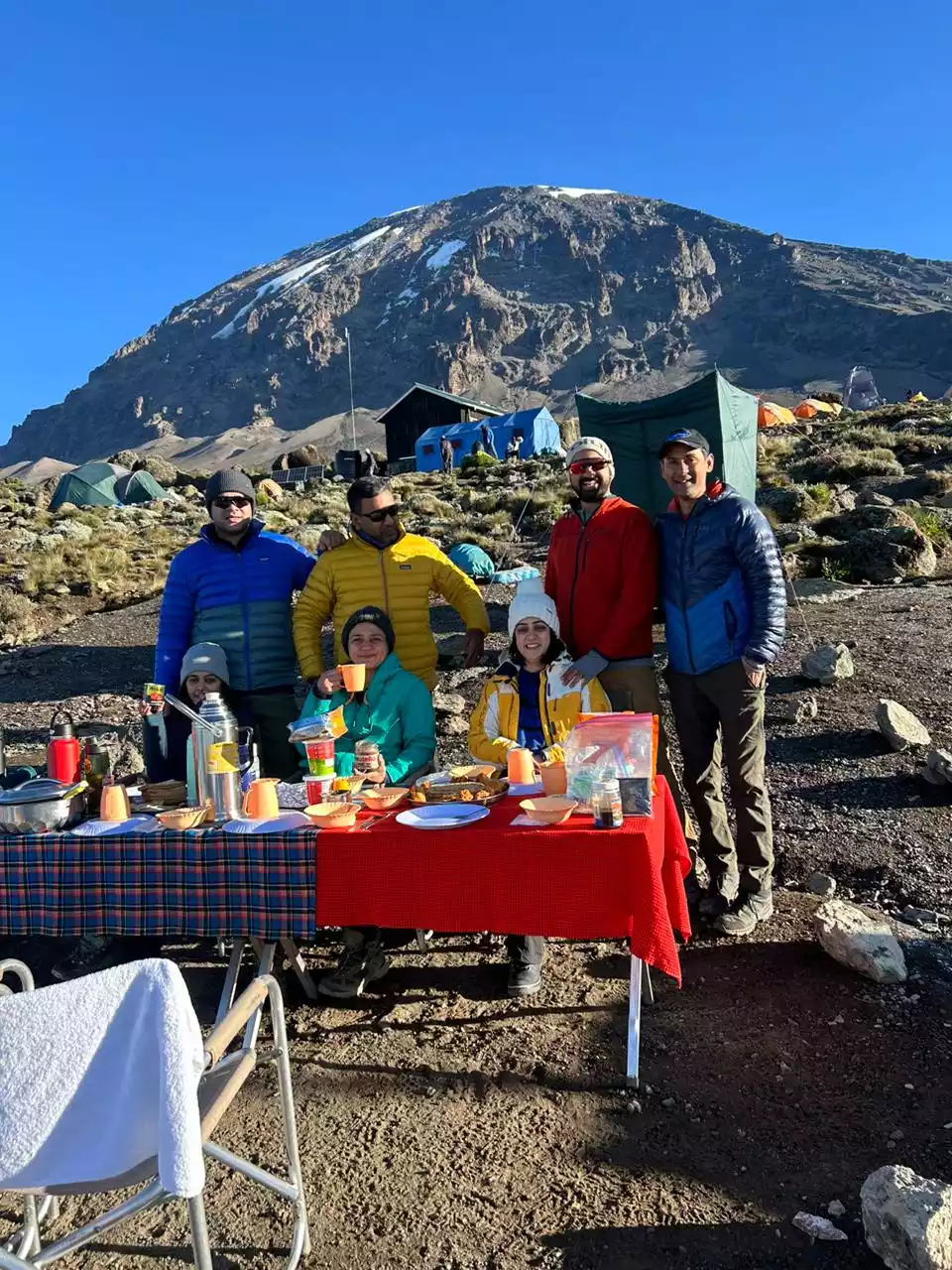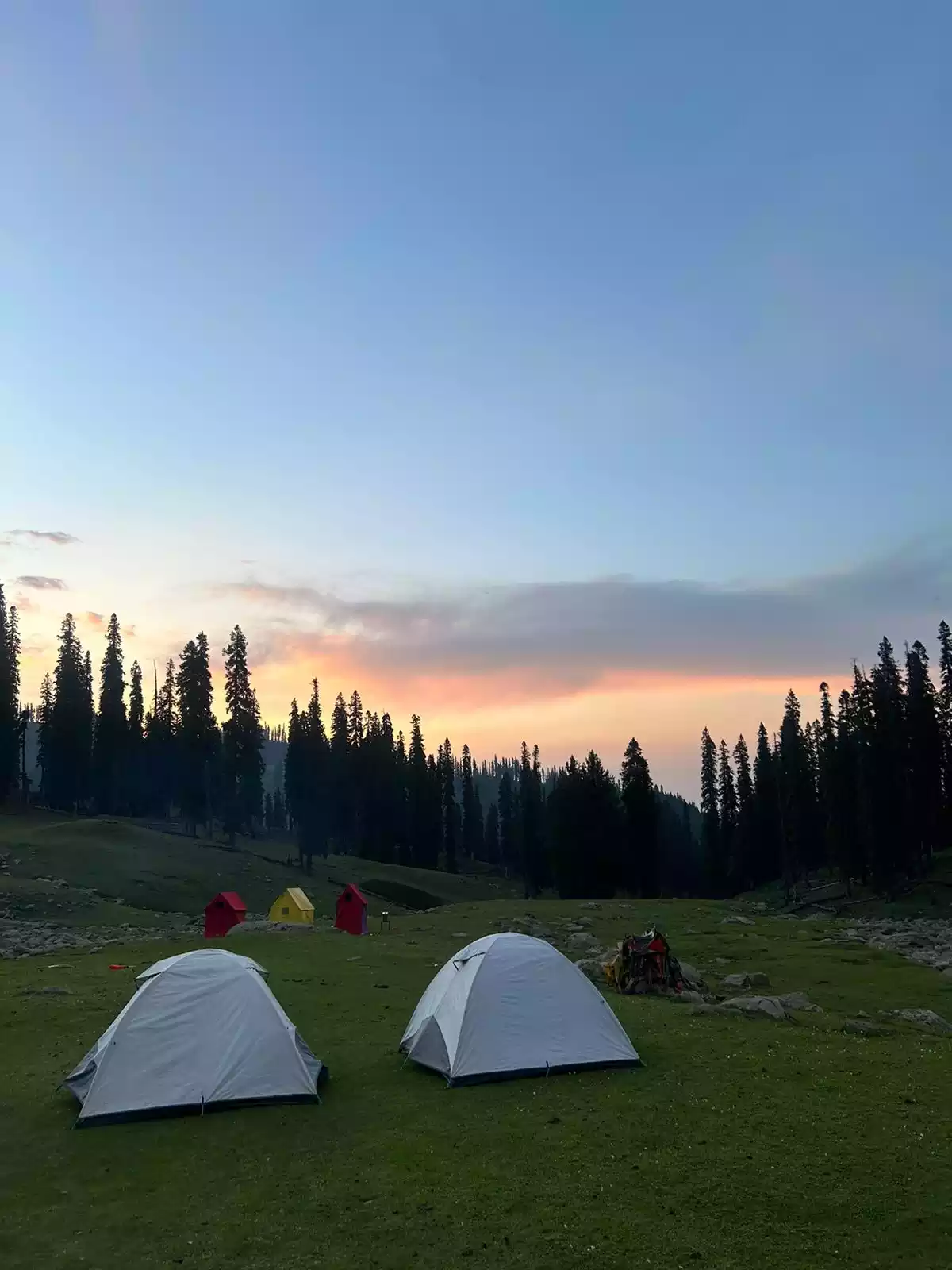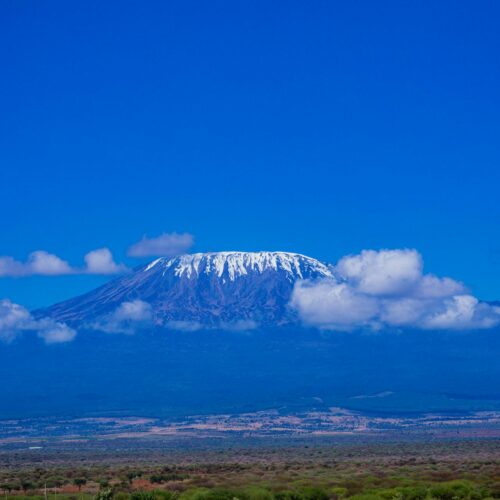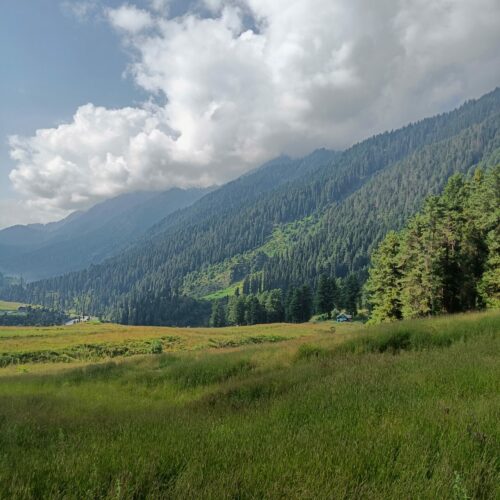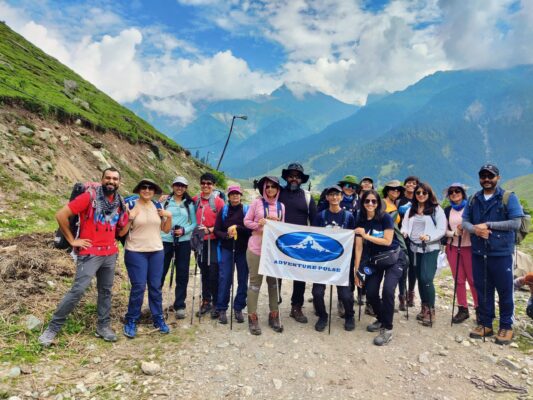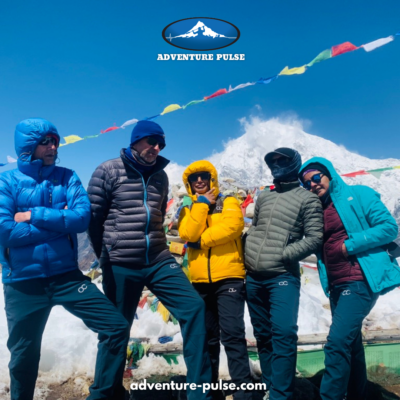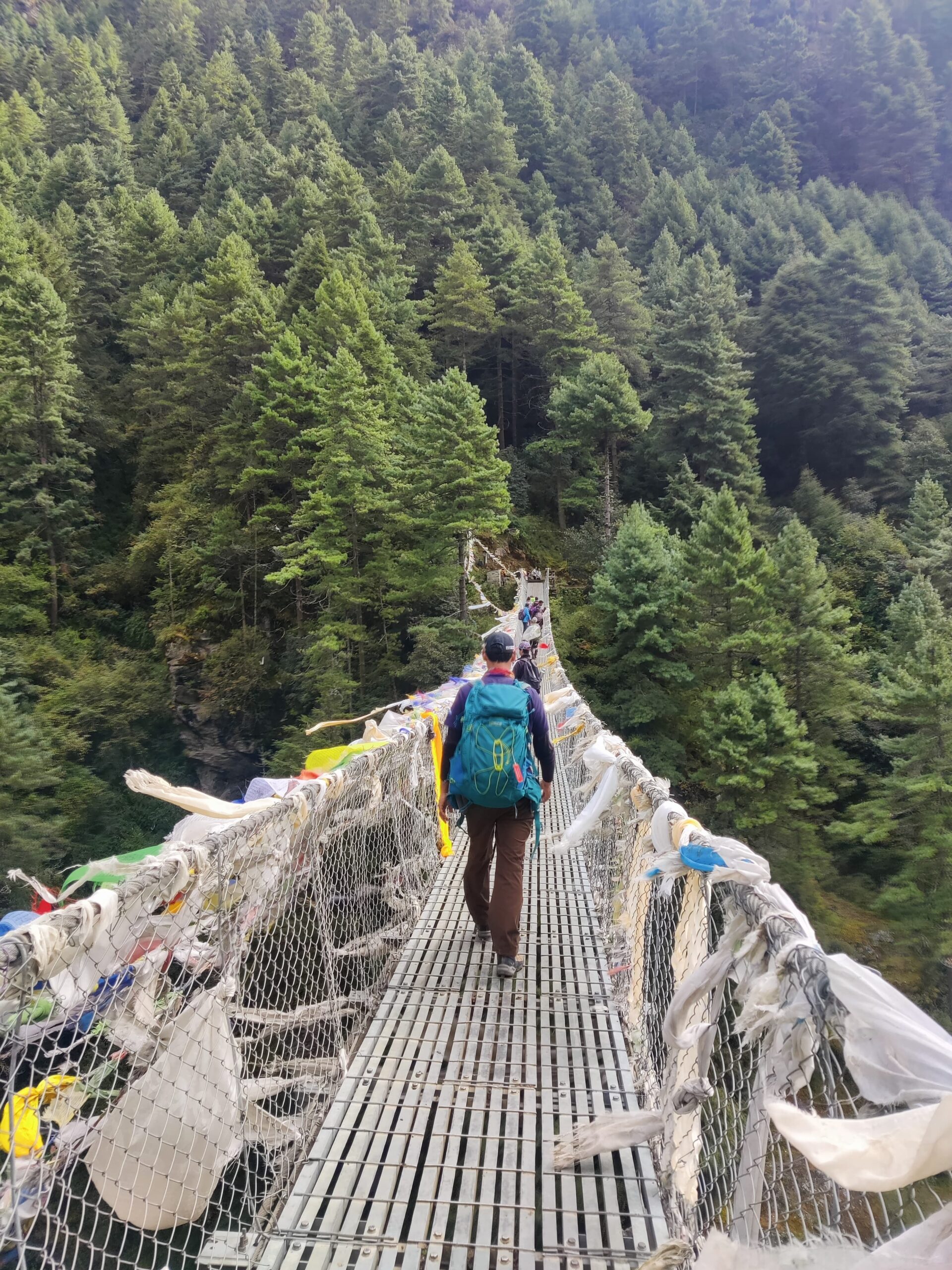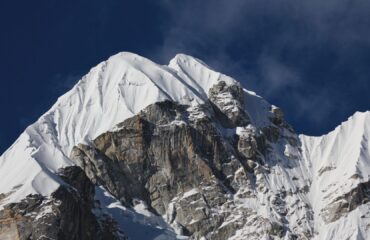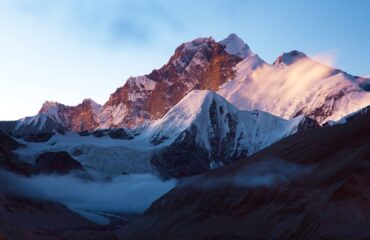
Introduction
The Everest Base Camp Trek is one of the most iconic and popular trekking experiences in the World. This is located in the Khumbu region of Nepal, which offers the chance to walk on the footsteps of the legendary mountaineers. Everest Base Camp, situated at a height of 5,364 meters, is just not a physically challenging trek but gives the experience of stunning landscape and the rich Sherpa culture. The journey is a remarkable adventure that typically lasts for 12–14 days. This depends upon the route you choose and your acclimatization routine. This connection with the Himalayas begins with a scenic flight journey to Lukla, a small mountain town that serves as the gateway to the trek.
Journey Overview and Landscape
The trek take you through beautiful villages, ancient monasteries, and lush greenery vegetation. As you climb high and gain altitude, the oxygen saturation begins to reduce. The locals welcome every trekker with open arms, allowing them to embrace and witness the warm Sherpa culture.
As you start your trek from Lukla, it takes you from the dense forests of oak and pine to the open valleys, and lastly, you meet the rocky paths as you approach the villages of Dingbuche, Lobuche and Gorakhshep. The landscape changes dramatically with the snow capped peaks as the altitude rises. The giant Himalayan peaks such as Nuptse, Ama Dablam and Pumori can be seen on the way to the base camp.
Reaching Everest Base Camp is not just an emotion but an experience that represents the culmination of the challenging journey and the dream of witnessing the world’s highest peak. This trek is not only treats you to breathtaking views but also gives you a taste of the cultural experience of people living there.
The Everest Base Camp Trek has multiple highlights and it’s unfair to not speak about all of all them. In this blog we’ll be discussing in detail, one such highlight of the journey – The Thukla Pass!
What Is Thukla Pass and What Is So Special About It?
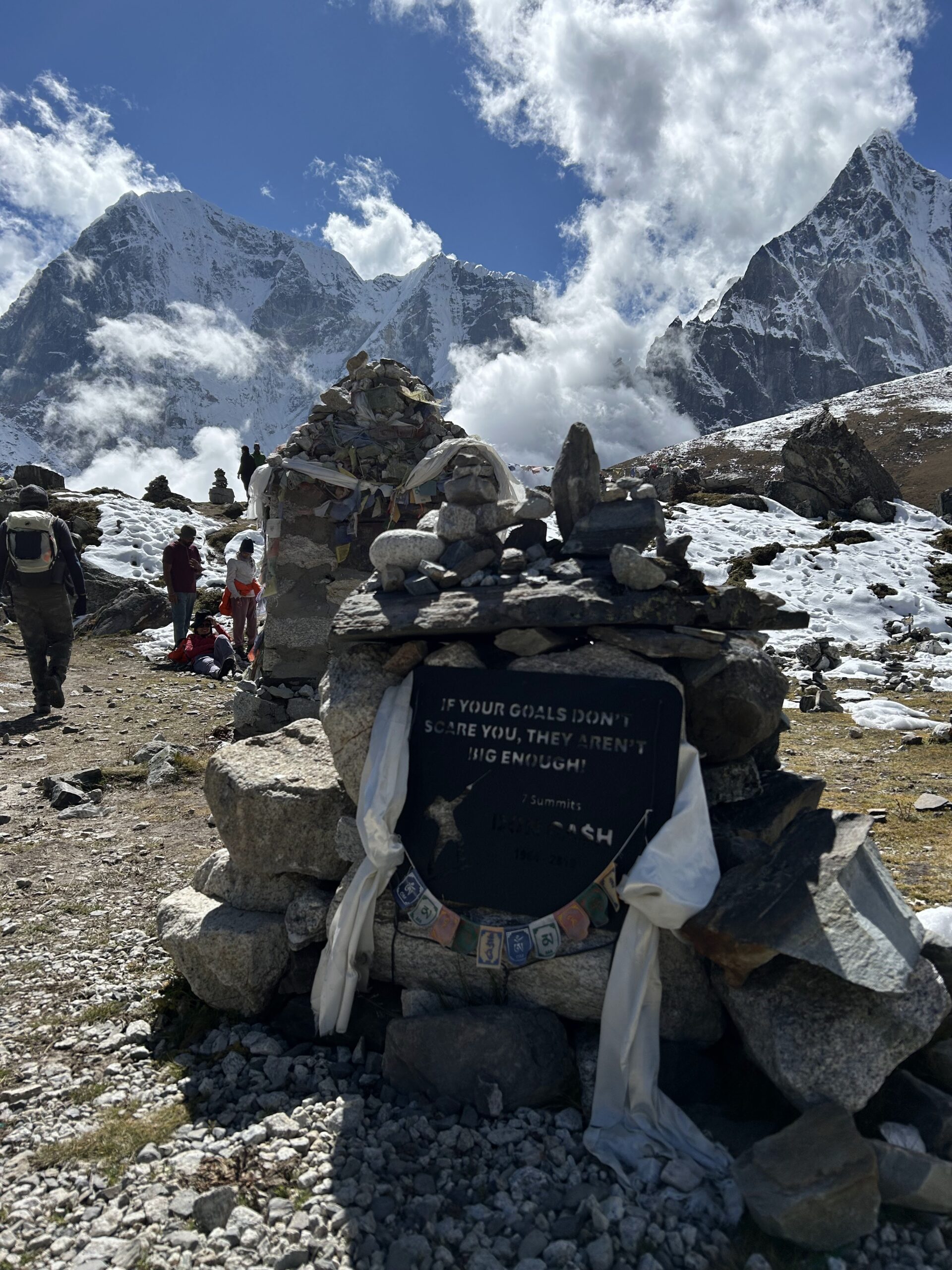
The Thukla Pass, also known as the Dughla Pass, stands at a height of 4,830 meters. The pass holds emotional and reflective significance for trekkers. Many consider it one of the most prominent parts of their journey. Trekkers find the pass situated between the Dingbuche and Lobuche villages. The collection of memorials on top of the Thukla Pass stands out as the most notable feature of the trek. These memorials honor the brave mountaineers who lost their lives while conquering Everest.
Tributes to legendary climbers, Sherpas, and international mountaineers stand at the pass. Some memorials even display inscriptions with heartfelt messages, photos, and short biographies. These create a somber and respectful atmosphere at the high-altitude location. Thukla Pass serves as a powerful reminder of the danger associated with the mountains. The memorials evoke a sense of reverence and humility. Many trekkers stop to pay their respects to the fallen climbers and reflect on the risks and sacrifices involved in mountaineering at such extreme altitudes.
The emotional significance of Thukla Pass goes beyond the physical challenge. It highlights the harsh reality of Mount Everest and provides trekkers with a deep sense of connection to the mountaineering community. Trekkers continue their journey toward the Everest Base Camp, carrying with them a reminder of the human spirit’s perseverance in the face of immense challenges and the legacy of those who came before them.
Views from the Thukla Pass
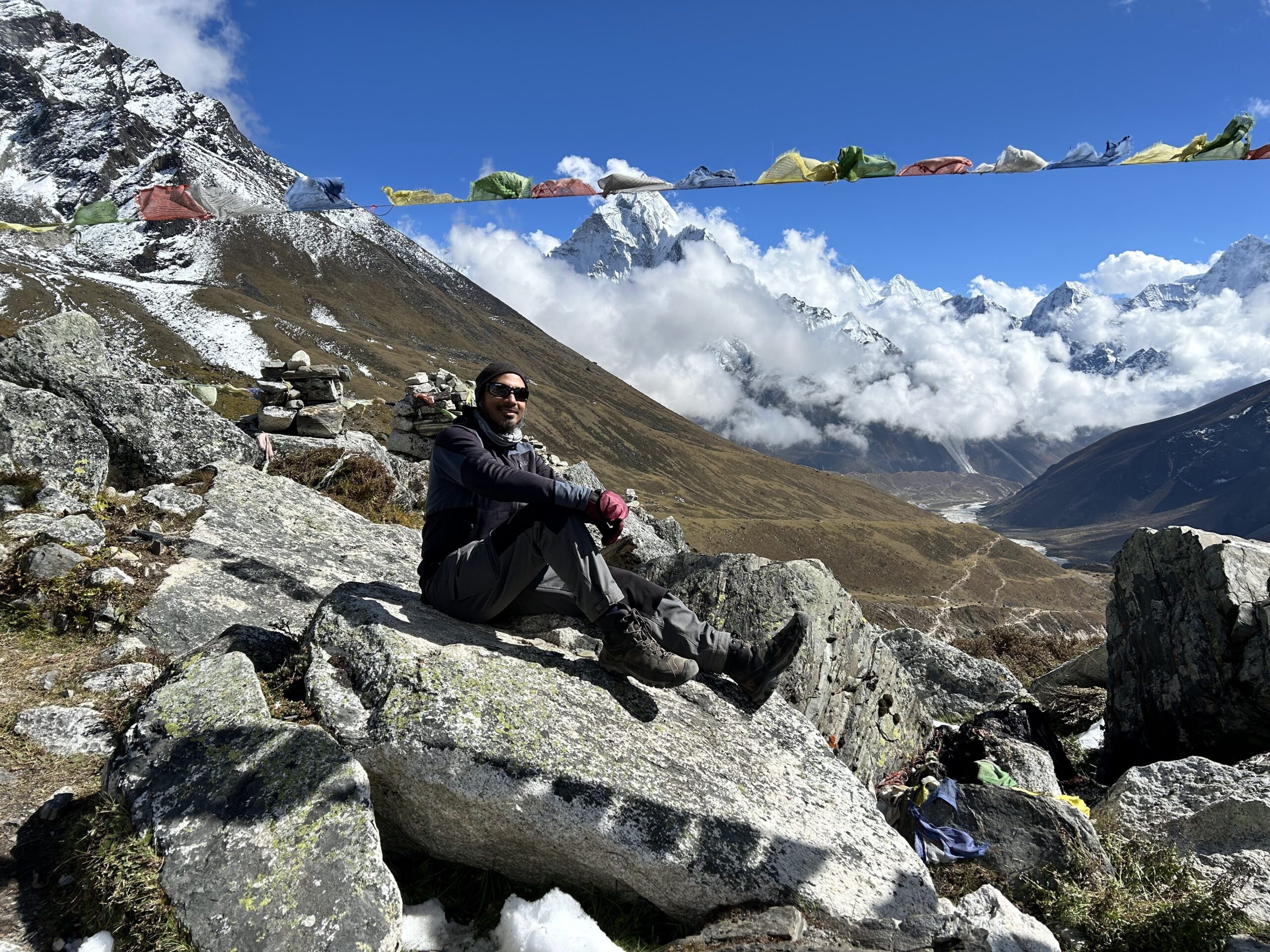
The views from the Thukla Pass are the most breathtaking panoramic views of the entire region. The combination of the majestic mountains, rugged landscape and poignant memorials makes the trek memorable. The stunning views offered by the several prominent peaks include the Nuptse, Pumori and Lhotse, being the world’s fourth-highest mountain. The sharp ridges of the Nuptse and pyramid-shaped Pumori are a bonus to the beautiful landscape. The sheer scale of these mountains, with their snow-capped summits glistening in the sunlight, creates an unparalleled view.
The sight of the landscape unfolding from this vantage point is truly humbling, giving trekkers a sense of the scale and power of nature. When you cross the pass, you see a number of memorials dedicated to the mountaineers who lost their lives in an attempt to climb Mount Everest. These memorials are adorned with prayer flags and are set against the mountain backdrop. Making this place a perfect place for photo opportunities and also the peaceful tribute adds a sense of respect and reverence.
History of the Memorial on the Pass
- The history of the memorial on Thukla Pass is one of the most prominent and emotional places on the trek. Located at 4,600 meters, it hosts several stones. These stones remind us of the extraordinary courage of those who sought to climb Everest. The site serves as a place of reflection, a tribute to their spirit, and, ultimately, a powerful part of the journey.
- The memorial stones and plaques on Thukla Pass scatter across the hillside, making it the final resting place for climbers who perished on Everest. They have engraved names on stones and plaques. It is said that they might have died due to extreme challenges like avalanches, harsh weather, and altitude sickness. The site stands as a somber tribute to adventurers who sought to push the limits of human endurance.
- Scott Fischer, an American mountaineer who tragically lost his life in 1996, is the most notable climber commemorated at the pass. He led the Adventure Consultants team, which had previously summited Everest and other peaks. His death, along with his teammates’, highlights the high risks and unpredictable weather conditions of the Everest Expedition. In addition to Fischer, other lesser-known climbers also receive honor at the site. Each one has a unique story of bravery, ambition, and sacrifice.
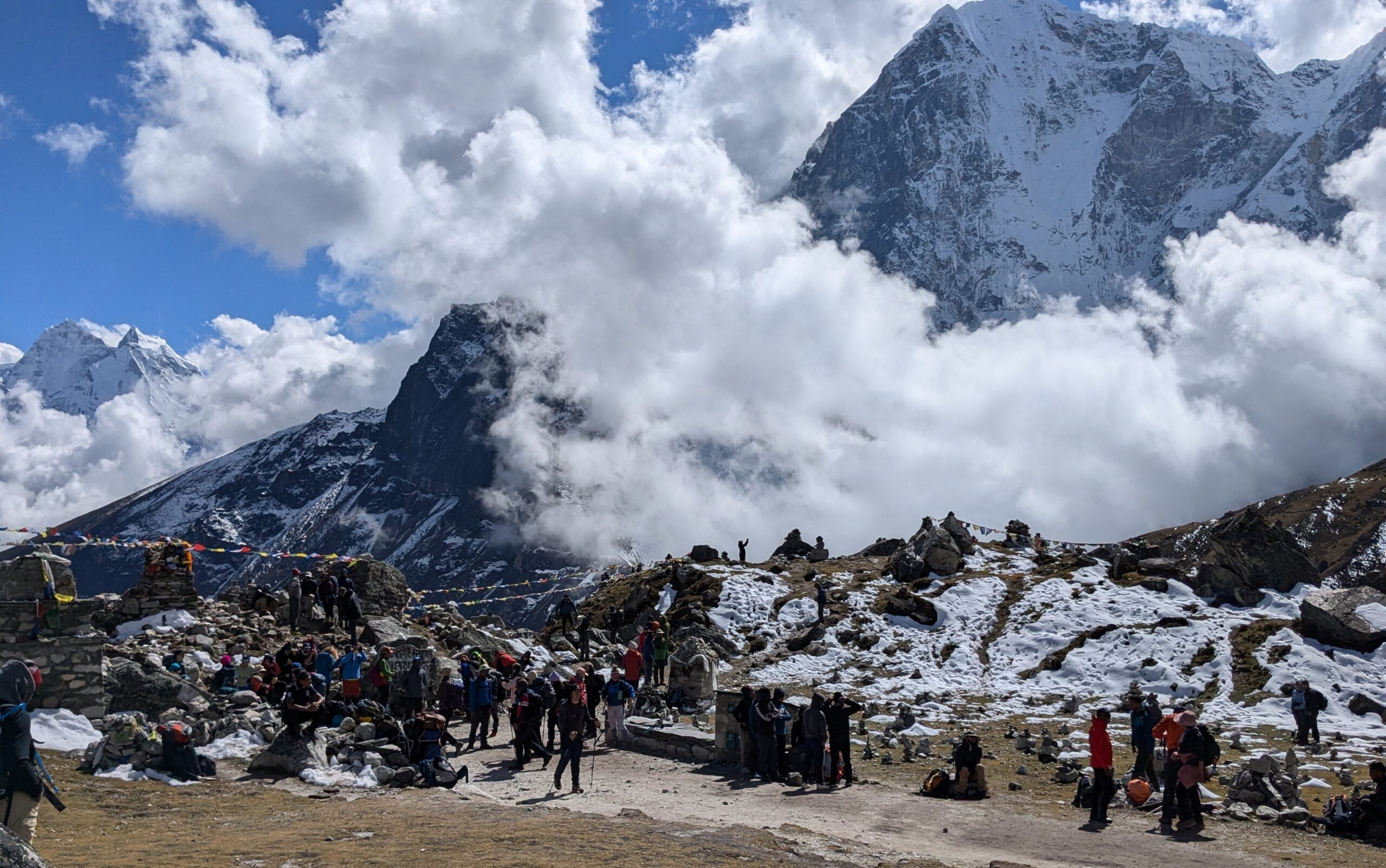
Thukla Pass holds deep cultural and emotional significance. The site serves as a place of reverence where trekkers honor the Sherpa community. Trekkers often pause to reflect on the risks faced by those who endure Everest’s harsh challenges. It offers a humbling experience that reminds trekkers of life and the immense obstacles mountaineers face. The memorials, draped in flags, add to the peaceful yet sorrowful mood as hikers pay respects to those who died in pursuit of their ambitions.
Start Time, Duration, and Terrain
The best time to cross the pass is mostly in the morning by 10 AM. The main reason to start early is to avoid the unpredictable weather conditions that change in the later part of the day. The afternoon brings snowstorms and strong winds that are common in the Everest region. Starting the trek early also safeguards the ample time for breaks to avoid the unnecessary stress and fatigue.
Approximately, it depends upon the trekkers to walk at their own pace in high altitude, which may vary from person to person. On average, it takes about 1.5 to 2 hours to reach the pass from Dingboche. The walk includes a steady ascent with a gradual increase in altitude. The crossing of the pass takes around an hour with pauses, drinking water and clicking snaps.
And the terrain leading to the Thukla Pass is challenging and varied. It starts with steep, rocky inclines that can test your balancing skills. And it’s steep ascent will surely test your stamina. Mostly the mornings are covered with dew and frost makes the rocks and boulders more slippery. As you slowly approach the top, the landscape becomes more wide with rocky outcrops and alpine meadows. In the winters, the path becomes snowy, which is more physically demanding. The caution of loose rock and uneven ground should be taken into consideration by trekkers. One of the steeper stretches of the Everest Base Camp is the ascent to Thukla Pass, which requires both stamina and caution.
What Are the Various Challenges You Can Face?
Altitude sickness is one of the most significant challenges on the pass. At such high altitude, the low oxygen level makes it difficult for your body to adapt and can raise the risk of AMS. Symptoms, like mild headaches, dizziness and nausea, can be common. Reporting these symptoms immediately to your guide is crucial so that they can give you the right advice and support. To prevent AMS, you must walk at your own pace and follow a proper acclimatization routine. Take rest whenever necessary and stay hydrated; avoid alcohol and smoking to reduce the risk of altitude sickness.

The weather condition in the Thukla Pass area can fluctuate, often it becomes very windy on the pass. The day changes drastically from bright sun to cloudy. The temperature can also drop considerably due to the same. It is necessary to be layered well with the necessary clothing to avoid fallen sick. Lastly, be prepared mentally as this climb will need you to have a positive attitude and keep your spirits high.
The varied terrain during the walk can be the most demanding. The steep uphill of Thukla is one of the biggest challenges. Trekking with a heavy backpack makes the ascent more challenging. Using trekking poles may help maintain balance and prevent knee strain, especially while descending. Taking short breaks and adjusting your pace to conserve energy will also assist you in navigating the terrain.
Trekking each day for long hours leads to physical exhaustion especially by the time tou reach Thukla. Often the walks are 6 to 8 hours on the high-altitude, rugged terrain and long distances make a person feel fatigued. Coping up with this exhaustion, it is important to pace yourself and listen to your body. Keep yourself hydrated, take regular breaks and proper nutrition helps in maintaining the energy level of the body. Carry energy bars, nuts, and chocolates to replenish and regain the lost energy.
Physical Fitness Preparation
- The Thukla Pass is one of the major crossings on the Everest Base Camp Trek. More than just high enthusiasm and determination, physical preparation is very crucial to ensure a safe and successful trek. The walk over long hours in challenging terrain, high altitude and difficult weather conditions requires proper physical fitness preparation. It not only focuses on building endurance, strength and flexibility but also what you need to handle the situation and minimize the risk of AMS.
- Cardiovascular exercise like running, cycling and swimming helps in building endurance. For long hiking in high altitude with a loaded backpack, it can also simulate the trekking condition. So adding 3 to 4 hours of physical exercise increases capacity and stamina.
- Building strength in the legs, core and upper body helps in the physically demanding areas of the trek. Focus on lunges, squats, step-ups, leg press and deadlifts for leg strengthening. For core stability, it starts with planks, situps and back extensions. Pushups and overhead presses can improve your upper-body posture during long days.
- Flexibility is important in reducing the risk of injury. Yoga or dynamic stretches focus on legs, back and hips, and this improves flexibility and mobility. Regular stretching post-cardiovascular and strength workouts will help maintain muscles flexible and prevent stiffness.
There are few tips for acclimatization, which helps in building stamina –
- There should be continuous training once you plan for the trek.
- Start at least 3 to 4 months in advance with a gradual increase in the intensity.
- Time of your workouts well with enough rest for your body to recover.
- Stimulate the gradual buildup with hill climbs, stair climbing and tread inclines.
Clothing and Equipment That May Be Needed
The selection of good clothes and proper equipment is as important as other factors. The weather in the mountains changes within a blink of an eye. As the Everest Base Camp Trek varies significantly with high altitude, keeping yourself in comfortable layering should be a must. Start with the base layer, followed by the insulating layers for warmth. Thermal wear like the long sleeve tops and pants keeps warm in the early mornings and late evenings. Also wear a down jacket and wind-cheater, especially for the Thukla Pass and the journey moving ahead. Add gloves, socks and a windproof or waterproof layer to protect you against the cold, rain, wind and snow.
Waterproof trekking shoes with a good grip and ankle support are much needed for the uneven terrain, especially near Thukla. Trekking poles can help you with additional support and are extremely in maintaining stability on steep and rocky sections of the trek. The pole also reduces strains on knees during the ascent and descents. Pack your essentials, like sunglasses and sunscreen, dry towels, moisturizer, and lip balm. At higher altitudes, the UV rays are much stronger so protection is much needed. And lastly, add energy bars, nuts and dried fruits with water in insulated bottles.
For a detailed list of things to pack and carry, please visit our website.
Conclusion
In conclusion, the Everest Base Camp Trek offers a journey that is both physically challenging and emotionally enriching. Each step provides trekkers with breathtaking views of the majestic Himalayas and a chance to connect with the Sherpa community’s rich culture. The Thukla Pass, with its memorials and stunning panoramas, is a powerful highlight. It serves as a reminder of the bravery and sacrifices made by those who came before. The trek requires physical preparation, mental strength, and resilience. However, it rewards trekkers with a profound sense of achievement and a deeper understanding of mountaineering. Whether walking in the footsteps of legendary climbers or simply taking in the awe-inspiring landscapes, the Everest Base Camp Trek will leave a lasting impression.
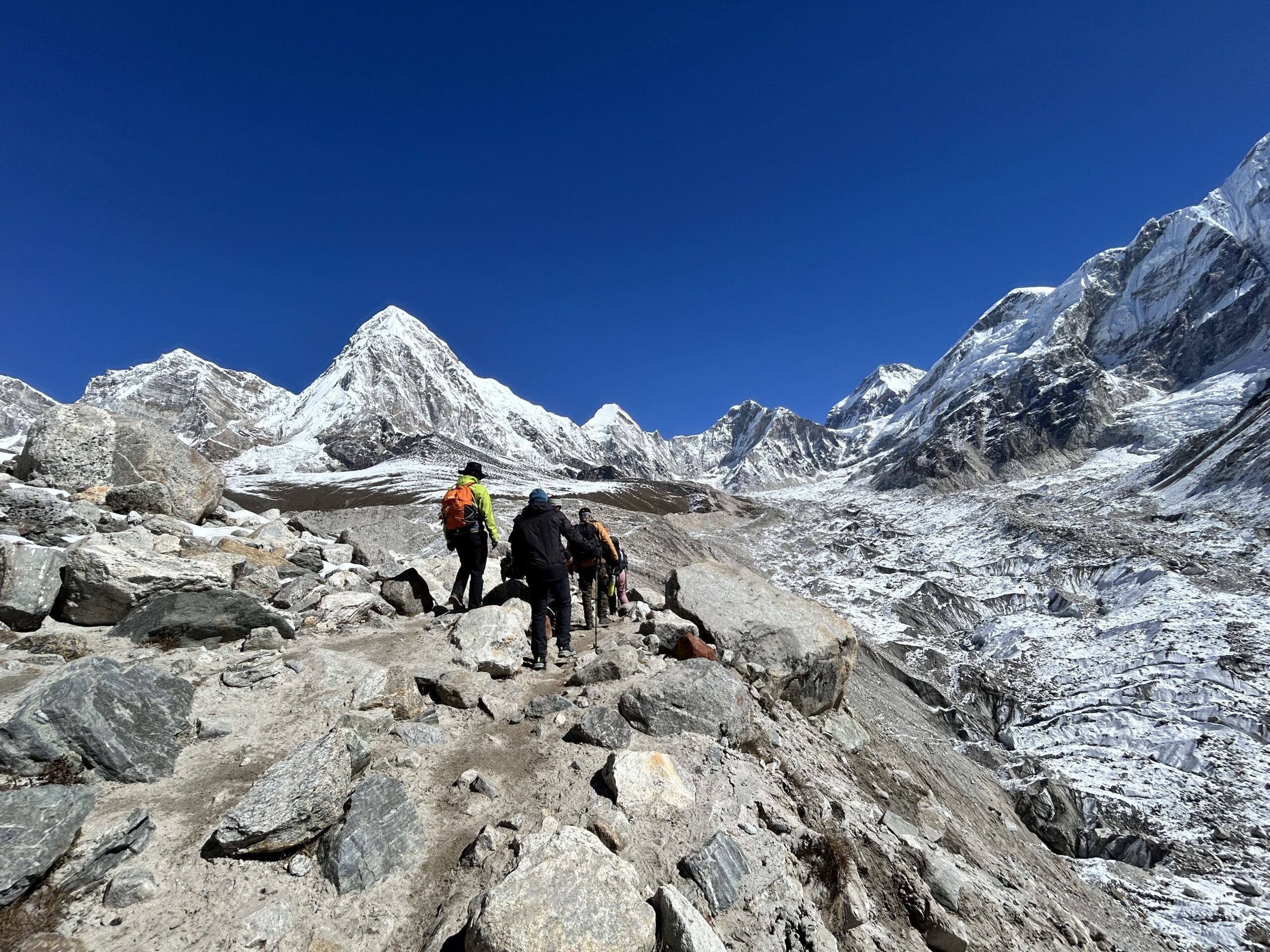
Follow us on Social Media : Trip Advisor | Instagram
Blog credits : Nabamita Choudhury

